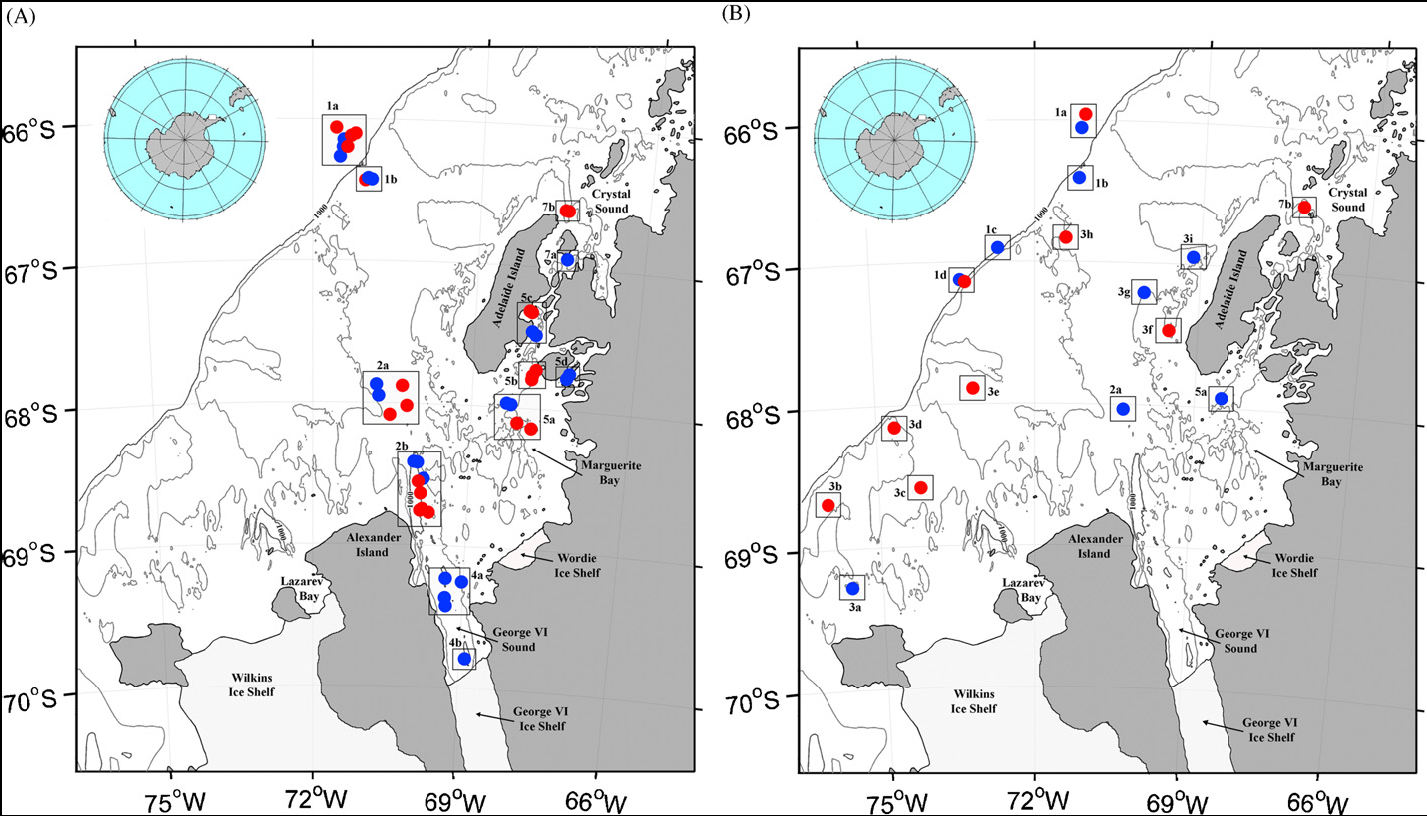Methodology:
Field work was done on four cruises conducted during the austral fall and winter. Cruises 1 (2001) and 3 (2002) were aboard the Antarctic Research Support Vessel (A.R.S.V.) Laurence M. Gould from April to June; cruises 2 (2001) and 4 (2002) were aboard the Research Vessel Ice Breaker (R.V.I.B.) Nathaniel B. Palmer from July to September.
Samples were collected with a 10m2 MOCNESS (MOC-10) outfitted with six 3mm mesh nets. The initial net fished obliquely to depth with each subsequent net fishing a discrete depth layer upward to the surface. At stations with depths>1000 m, layers sampled were 0-1000, 1000-500, 500-200, 200-100, 100-50, and 50-0 m. At stations with depths >500 m, layers sampled were 0-500, 500-300, 300-200, 200-100, 100-50, and 50-0 m. At stations with depths <500 m, sample layers were modified to provide optimal coverage of the water column with the five discrete-depth nets.
A total of 62 MOC-10 trawls were done, 22 each in the fall of 2001 and 2002, and 9 each in the winter of 2001 and 2002 (Table 1). Trawls were conducted at various times throughout the day. In the fall, 37 trawls occurred at night (18:00-06:00 h), 1 in daylight, and 6 at dusk. In the winter, seven trawls occurred at night, seven in daylight, and four at twilight. Towing speed for all tows was 1.5-2.2 knots. Tows in pack ice were conducted in leads created by the ship's wake with the A-frame in to minimize the chance of hooking the wire on ice floes. When ice conditions dictated, the ship first traversed a trawling transect prior to deployment and then backtracked over the same course through the created lead to insure that adequate speed could be maintained for the duration of the tow.

Fig. 1. Trawling sites for (A) fall and (B) winter SO GLOBEC cruises; blue circles: 2001 and red circles: 2002.

 ©2025 Biological and Chemical Oceanography Data Management Office.
©2025 Biological and Chemical Oceanography Data Management Office.
